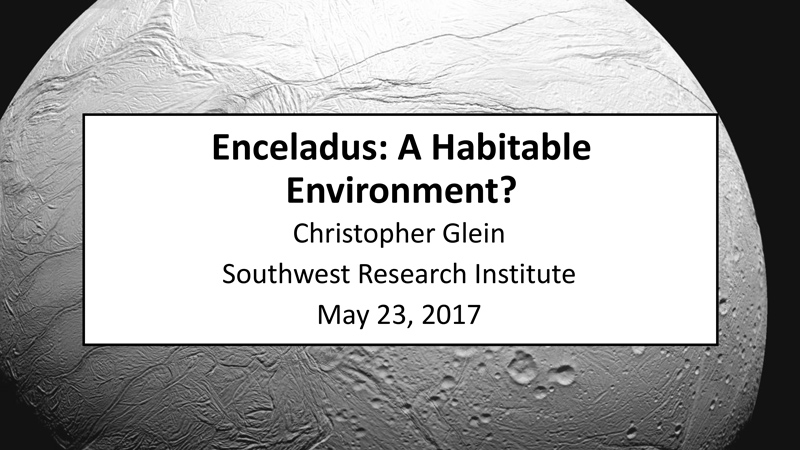Enceladus: A Habitable Environment?

| Language |
|
|---|
NASA Missions Provide New Insights into 'Ocean Worlds' in Our Solar System,” announced a NASA press release in April. Life as we know it requires three primary ingredients: liquid water; a source of energy for metabolism; and the right chemical ingredients, primarily carbon, hydrogen, nitrogen, oxygen, phosphorus and sulfur. With this finding, Cassini has shown that Enceladus – a small, icy moon a billion miles farther from the sun than Earth – has nearly all of these ingredients for habitability. Come hear Chris Glein of Southwest Research Institute discuss Cassini’s discovery of molecular hydrogen, a possible food source for (hypothetical) microbes in Enceladus’ salty subsurface sea.
Chris Glein, Southwest Research Institute: "I am a geochemist who studies a range of topics in planetary science, astrobiology, and organic geochemistry. I obtained a Ph.D. in Geological Sciences from Arizona State University, and I now work at Southwest Research Institute in San Antonio. I conduct theoretical and laboratory studies to understand natural chemical processes. My research interests include the formation and evolution of moons in the outer Solar System, the emergence of life, and organic chemistry in water-rock systems."

